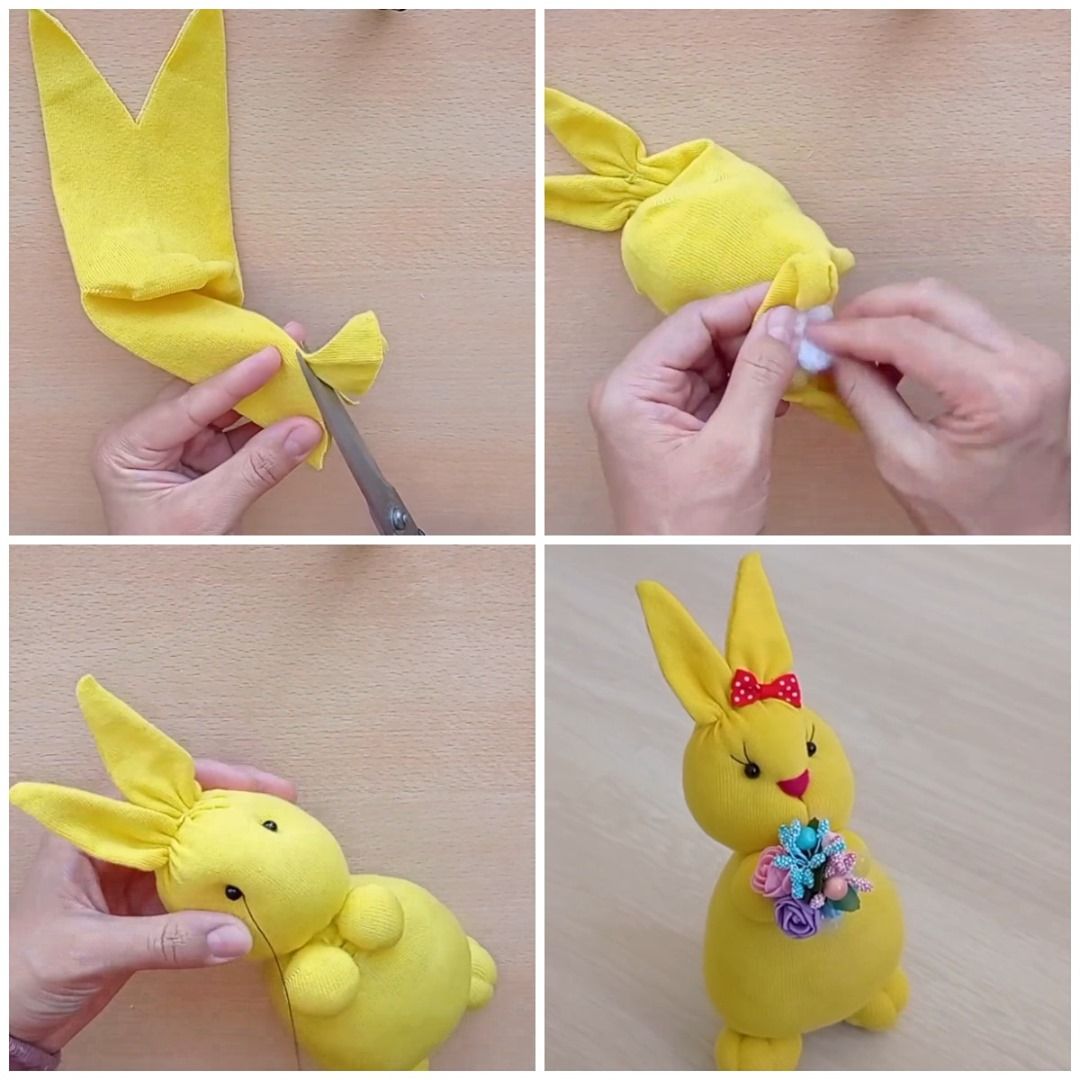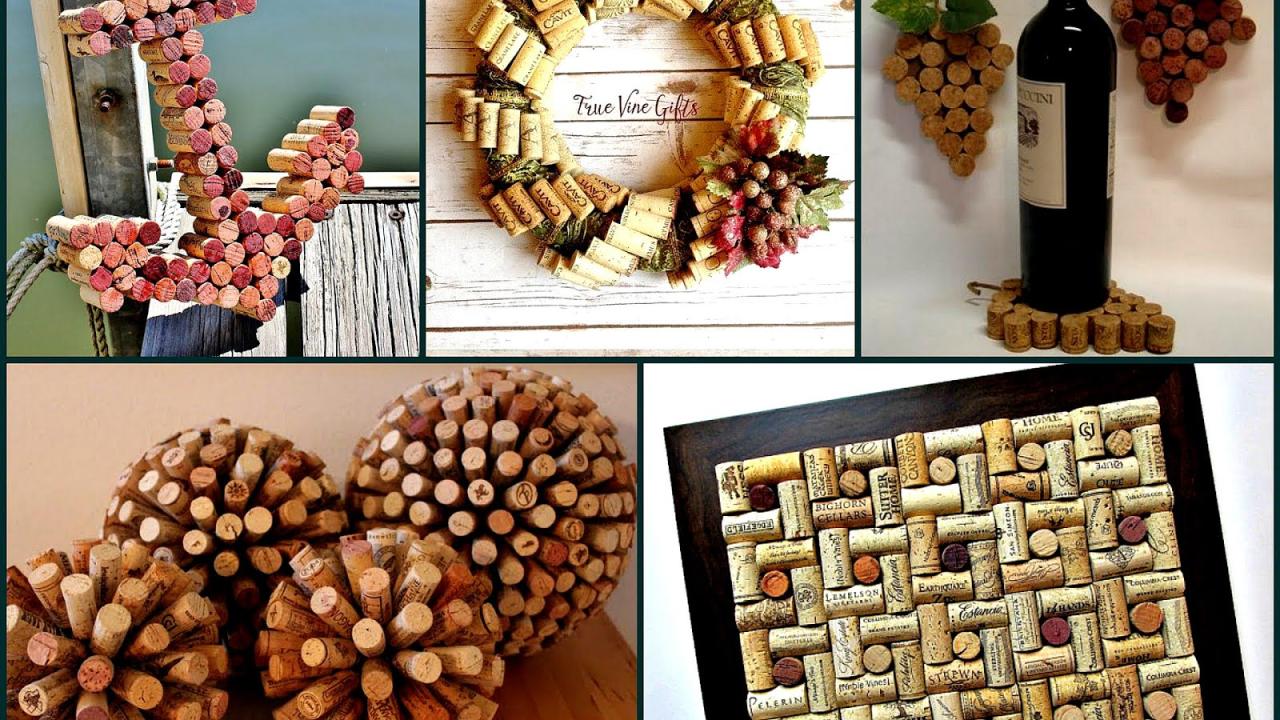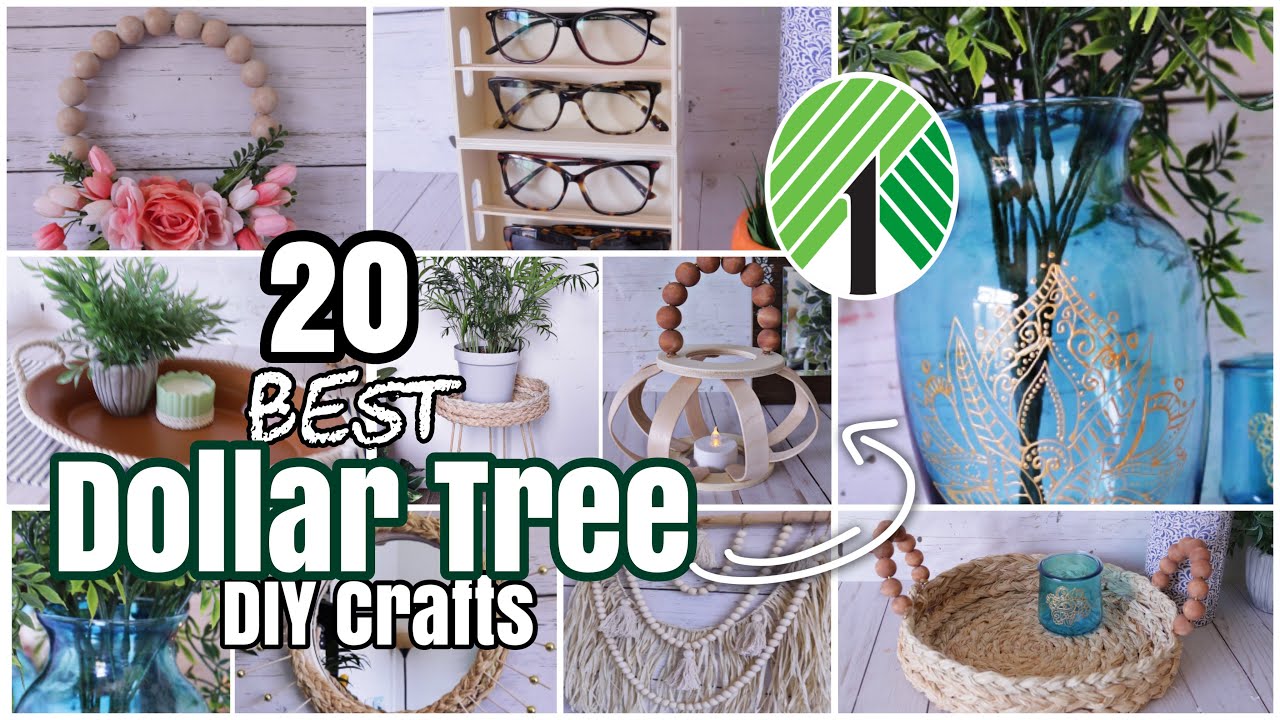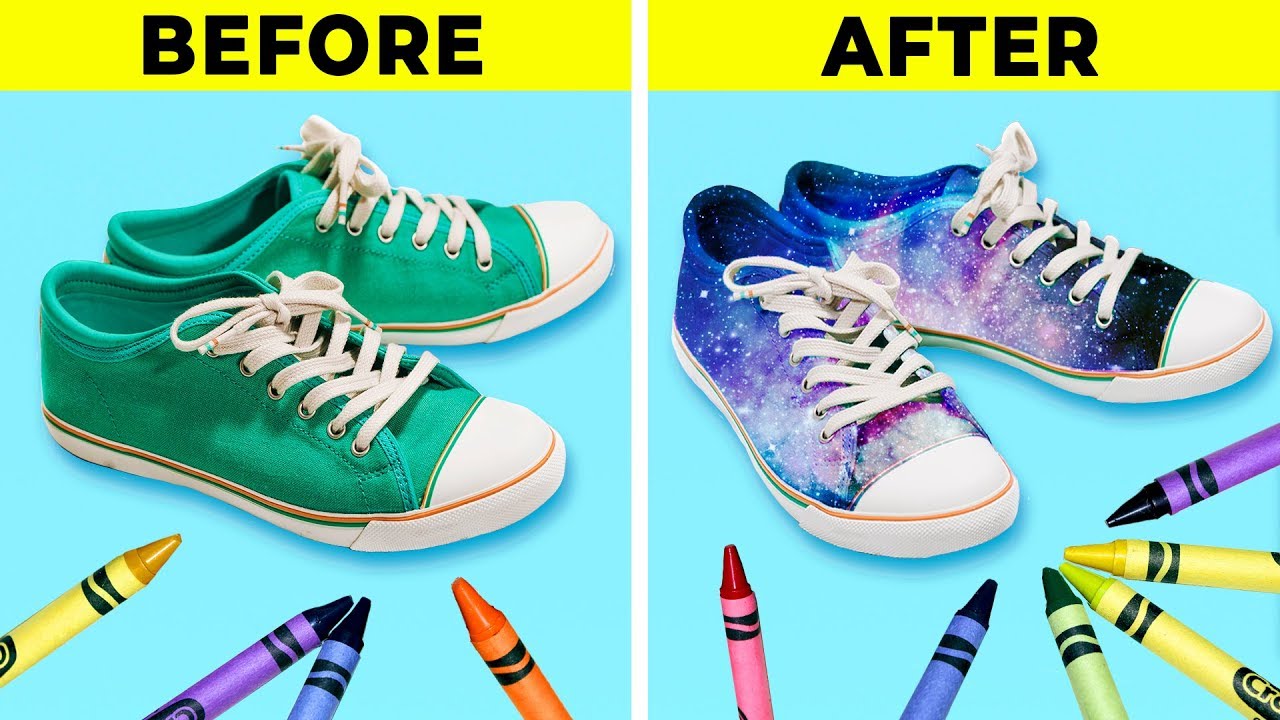DIY Ideas: Unleash Your Creativity – From transforming old furniture into stunning home decor to crafting unique gifts for loved ones, the world of DIY projects offers endless possibilities for self-expression, creativity, and practical problem-solving. Whether you’re a seasoned crafter or a curious beginner, DIY projects provide a rewarding and engaging way to personalize your surroundings, explore new skills, and create something truly special.
This guide delves into a wide range of DIY ideas, covering everything from home decor and upcycling to gardening, fashion, and even technology. We’ll explore step-by-step tutorials, budget-friendly solutions, and eco-friendly practices, inspiring you to embark on your own DIY journey.
Home Decor & Upcycling
Revamping your home doesn’t have to break the bank. With a little creativity and some DIY know-how, you can transform old furniture, personalize your decor, and create a cozy and inviting atmosphere without spending a fortune.
Revamping Furniture
Revamping furniture is a great way to give old pieces a new lease on life and add a personal touch to your home. There are many ways to revamp furniture, from simple paint jobs to more elaborate upholstery projects.
Here are a few ideas for revamping furniture:
- Paint: A fresh coat of paint can instantly transform a piece of furniture. Choose a color that complements your existing decor or try a bold accent color to make a statement.
- Upholstery: If you’re feeling ambitious, you can reupholster a chair or sofa. This is a more involved project, but it can be incredibly rewarding.
- Hardware: Replacing the hardware on a piece of furniture can give it a whole new look. You can find a wide variety of knobs, pulls, and hinges at most home improvement stores.
- Decoupage: Decoupage is a fun and easy way to add a decorative touch to furniture. Simply glue paper or fabric onto the surface of the furniture and seal it with varnish.
Crafting & DIY Gifts
Crafting personalized gifts is a thoughtful and rewarding way to show loved ones you care. It allows you to express your creativity and create something unique and special that reflects your personal touch.
Crafting Unique Gifts for Various Occasions
Handmade gifts are perfect for birthdays, holidays, or any occasion where you want to express your love and appreciation. Here are some ideas for crafting unique gifts for different occasions:
- Birthdays: Consider creating a personalized photo album or scrapbook, a custom-made piece of jewelry, or a hand-painted mug with a special message.
- Holidays: For the holidays, you can create festive decorations like homemade ornaments, knitted scarves, or embroidered holiday stockings.
- Anniversaries: A hand-stitched quilt, a framed photo collage, or a personalized piece of art can be a meaningful gift for an anniversary.
Techniques for Creating Personalized Handmade Gifts
Adding a personal touch to your gifts can make them even more special. Here are some techniques for personalizing your creations:
- Embroidery: Add a monogram, a special date, or a meaningful quote to a piece of fabric using embroidery.
- Painting: Personalize a mug, a wooden box, or a canvas with a hand-painted design or a special message.
- Engraving: Create a personalized message on a piece of jewelry, a wooden cutting board, or a piece of glassware using engraving.
DIY Projects for Different Skill Levels
There are countless DIY projects that cater to different skill levels. Here are some examples:
- Beginner: Simple projects like painted flower pots, decorated candles, or homemade soap are great for beginners.
- Intermediate: For those with some experience, try making a knitted scarf, a crocheted blanket, or a personalized tote bag.
- Advanced: Advanced crafters can tackle projects like woodworking, leatherworking, or jewelry making.
Materials and Tools for Crafting DIY Gifts
The materials and tools you need for crafting DIY gifts will vary depending on the project you choose. Here is a list of common materials and tools:
- Fabric: Cotton, linen, silk, and felt are popular choices for crafting projects.
- Yarn: Choose from wool, acrylic, or cotton yarn depending on the project and your preference.
- Paint: Acrylic paint is versatile and easy to use for many projects.
- Wood: Pine, birch, and oak are common woods used for crafting.
- Tools: Sewing machine, knitting needles, crochet hook, paintbrushes, glue gun, scissors, and measuring tape are essential tools for many crafting projects.
Gardening & Outdoor Projects
Transforming your outdoor space into a vibrant and functional garden can be achieved with a little creativity and DIY techniques. From creating beautiful garden beds to building cozy outdoor structures, there are countless ways to personalize your backyard and enjoy the benefits of a green oasis.
Building a Garden Bed
Constructing a raised garden bed offers numerous advantages, including better drainage, improved soil quality, and enhanced accessibility.
To create a garden bed, you’ll need:
- Wood planks or other materials like concrete blocks or recycled materials
- Screws or nails for assembly
- Soil and compost for filling
Follow these steps:
- Measure the desired dimensions of your garden bed and cut the planks accordingly.
- Assemble the planks using screws or nails, ensuring a sturdy and level structure.
- Position the garden bed in a sunny location with good drainage.
- Fill the bed with a mixture of soil and compost, leaving a few inches of space at the top for watering.
Creating Outdoor Structures
Building outdoor structures like shelters, benches, or arbors can add charm and functionality to your garden. These projects require some basic carpentry skills and materials like wood, screws, and paint.
Here are some ideas for outdoor structures:
- A simple pergola: A pergola can provide shade and a climbing space for vines.
- A cozy bench: A bench made from reclaimed wood can offer a comfortable seating area for enjoying your garden.
- A small shed: A shed can be used to store gardening tools and supplies.
For example, to create a simple pergola, you’ll need to construct a frame using four posts and crossbeams. Attach the beams to the posts using screws or bolts, ensuring a sturdy and level structure. You can then add a roof made from lattice or other materials.
Creating a Vertical Garden or Herb Wall
Vertical gardening is an excellent solution for limited space and adds a unique touch to your outdoor space.
Here are some methods for creating a vertical garden:
- Using pallets: Repurposed pallets can be transformed into vertical garden structures by attaching pockets or planters to the slats.
- With wire mesh: A wire mesh panel can be mounted on a wall and used to hold plant pots or hanging baskets.
- Creating a living wall: A living wall can be created using specialized panels with built-in pockets for plants.
For instance, to create a pallet vertical garden, you’ll need to attach pockets made from fabric or plastic to the slats of the pallet. Fill the pockets with soil and plant your chosen herbs or vegetables.
DIY Planters and Containers
Upcycling materials into planters and containers is a fun and eco-friendly way to showcase your plants.
Here are some ideas for DIY planters:
- Old tires: Tires can be painted and used as planters for flowers or vegetables.
- Ceramic pots: Decorate ceramic pots with paint, stencils, or mosaic tiles.
- Wooden crates: Wooden crates can be stacked or hung to create unique planter displays.
For example, to upcycle an old tire, you’ll need to clean it thoroughly and paint it with a weather-resistant paint. Drill drainage holes at the bottom before filling it with soil and planting your desired plants.
Eco-Friendly Gardening Practices
Sustainable gardening practices promote a healthy ecosystem and minimize environmental impact.
Here are some DIY solutions for eco-friendly gardening:
- Composting: Create a compost bin to recycle food scraps and yard waste into nutrient-rich fertilizer.
- Rainwater harvesting: Install a rain barrel to collect rainwater for watering plants.
- Using natural pest control: Create homemade pest repellents using essential oils or garlic.
For instance, to create a compost bin, you can use a wooden crate or a plastic container with holes for aeration. Fill the bin with layers of brown materials like leaves and straw and green materials like food scraps and grass clippings. Regularly turn the compost to ensure proper decomposition.
DIY Fashion & Accessories
Give your wardrobe a personal touch with DIY fashion and accessories. Whether you’re looking to revamp old clothes, create unique jewelry, or customize your footwear, there are countless ways to express your style through DIY projects.
Custom Clothing Alterations, Diy ideas
Customizing clothing can be a great way to make your wardrobe more unique and flattering. Here are some ideas for alterations you can make yourself:
- Hemming pants or skirts: Hemming is a simple alteration that can make a big difference in the fit of your pants or skirt. Use a sewing machine or hand-sew to create a clean, even hem.
- Shortening sleeves: If you have shirts or dresses with sleeves that are too long, you can shorten them to your desired length. Be sure to use a measuring tape to ensure evenness.
- Adding embellishments: Embellishments can add a touch of personality to your clothing. You can use fabric scraps, buttons, beads, or other materials to create unique designs. Use fabric glue or a sewing machine to attach the embellishments.
Upcycling Old Clothes
Upcycling is the process of transforming old clothes into new, fashionable pieces. Here are some ideas for upcycling old clothes:
- Turning an old t-shirt into a tote bag: Cut off the sleeves and bottom of a t-shirt, then sew the sides together to create a tote bag. You can decorate the bag with fabric paint, embroidery, or other embellishments.
- Making a skirt out of an old dress: If you have a dress that you no longer wear, you can cut off the top and use the bottom as a skirt. You can add a waistband or elastic to make it more comfortable.
- Creating a patchwork quilt: Use old t-shirts, jeans, or other fabric scraps to create a unique patchwork quilt. You can use a sewing machine or hand-sew the pieces together.
DIY Jewelry & Accessories
Making your own jewelry and accessories is a fun and affordable way to express your style. Here are some ideas for DIY jewelry:
- Beaded necklaces: Use beads of different shapes, sizes, and colors to create unique necklaces. You can string the beads on a thread or wire.
- Wire-wrapped earrings: Use wire to wrap around beads or stones to create unique earrings. You can find tutorials online for different wire-wrapping techniques.
- Resin jewelry: Resin is a versatile material that can be used to create a variety of jewelry pieces. You can embed flowers, shells, or other objects in resin to create unique designs.
Customizing Footwear & Bags
Give your shoes and bags a personal touch with DIY customization. Here are some ideas for customizing footwear and bags:
- Painting shoes: Use fabric paint or acrylic paint to create designs on your shoes. You can use stencils or freehand designs. Make sure to seal the paint with a sealant to protect it.
- Adding embellishments to bags: Use fabric glue or a sewing machine to attach embellishments such as buttons, beads, or charms to your bags. You can also use fabric paint to create designs on the bag.
- Dyeing shoes or bags: Dyeing is a great way to change the color of your shoes or bags. Be sure to use a dye that is specifically designed for fabric.
DIY for Kids
DIY projects for kids are a fantastic way to encourage creativity, problem-solving skills, and a love for learning. They offer opportunities for children to explore their imaginations, develop fine motor skills, and build confidence.
Educational Toys and Activities
Creating educational toys and activities for children is a great way to make learning fun and engaging. By involving children in the process, you can tailor the activities to their interests and learning styles.
Here are some ideas for educational DIY projects:
- Sensory Bottles: Fill clear plastic bottles with different materials like glitter, beads, rice, or water. These bottles provide visual and tactile stimulation, helping children develop their sensory awareness.
- Homemade Playdough: A simple recipe of flour, salt, water, and food coloring allows children to create their own playdough, fostering creativity and imagination.
- Alphabet Puzzle: Cut out cardboard letters and create a puzzle for children to assemble, helping them learn the alphabet and develop fine motor skills.
- Counting Beads: String beads onto pipe cleaners or yarn, allowing children to count and practice their math skills.
Encouraging Creativity and Problem-Solving
DIY projects provide a platform for children to express their creativity and develop problem-solving skills. By encouraging them to think outside the box and experiment with different materials, you can nurture their innovative spirit.
Here are some ideas for DIY projects that promote creativity and problem-solving:
- Cardboard Box Creations: Transform cardboard boxes into castles, spaceships, or anything their imaginations can conjure up. This encourages creativity and spatial reasoning.
- Nature Crafts: Gather natural materials like leaves, sticks, and stones to create nature-inspired crafts, fostering a connection with the environment and encouraging creativity.
- Recycled Art Projects: Use recycled materials like plastic bottles, cardboard tubes, and egg cartons to create unique art pieces, promoting environmental awareness and resourcefulness.
- Building Blocks: Construct towers, bridges, or other structures using building blocks, encouraging spatial reasoning and problem-solving skills.
DIY for the Kitchen & Food
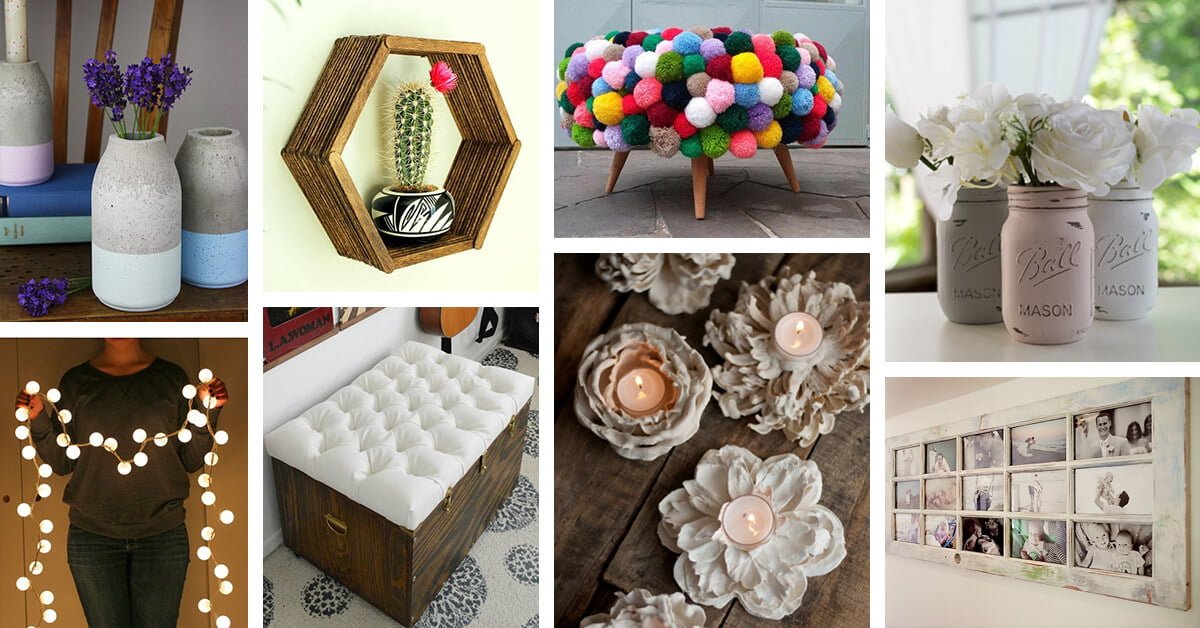
Transform your kitchen into a haven of culinary creativity and resourceful solutions with these DIY projects. From crafting delectable homemade condiments to organizing your space efficiently, these tips will enhance your kitchen experience.
Homemade Condiments and Sauces
Homemade condiments and sauces are not only delicious but also allow you to control the ingredients and avoid artificial additives. Here are some recipes for popular kitchen staples:
- Mayonnaise: Combine 1 egg yolk, 1 tablespoon lemon juice, 1 teaspoon Dijon mustard, and 1/2 teaspoon salt in a blender. While blending, slowly drizzle in 1 cup of vegetable oil until the mixture emulsifies.
- Ketchup: Combine 1 cup tomato puree, 1/4 cup white vinegar, 1/4 cup brown sugar, 1 tablespoon molasses, 1 teaspoon onion powder, 1 teaspoon garlic powder, 1 teaspoon salt, and 1/2 teaspoon black pepper in a saucepan. Bring to a boil, then reduce heat and simmer for 15 minutes, stirring occasionally. Let cool completely before storing in a jar.
- BBQ Sauce: Combine 1 cup ketchup, 1/2 cup brown sugar, 1/4 cup apple cider vinegar, 1/4 cup Worcestershire sauce, 1 tablespoon Dijon mustard, 1 tablespoon smoked paprika, 1 teaspoon onion powder, 1 teaspoon garlic powder, and 1/2 teaspoon black pepper in a saucepan. Bring to a boil, then reduce heat and simmer for 30 minutes, stirring occasionally. Let cool completely before storing in a jar.
DIY Kitchen Organizers and Storage Solutions
Maximizing space and keeping your kitchen tidy is essential for efficient cooking and a stress-free environment. Here are some DIY solutions:
- Spice Rack: Use a piece of wood or a repurposed picture frame to create a spice rack. Drill holes in the wood to fit your spice jars, and attach hooks to the bottom for hanging utensils.
- Under-Sink Organizer: Utilize a tiered shelf or a set of baskets to organize cleaning supplies and other items under the sink. Label each shelf or basket for easy access.
- Over-the-Door Organizer: An over-the-door organizer can be used to store spices, cleaning supplies, or even small appliances.
Homemade Cleaning Products and Detergents
Creating your own cleaning products is a great way to save money and avoid harsh chemicals. Here are some recipes:
- All-Purpose Cleaner: Combine 1 cup white vinegar, 1/2 cup water, and 1 tablespoon dish soap in a spray bottle. This solution can be used to clean countertops, floors, and appliances.
- Dish Soap: Combine 1 cup grated castile soap, 1/2 cup water, and 1 tablespoon glycerin in a blender. Blend until smooth, then pour into a container.
- Laundry Detergent: Combine 1 cup grated castile soap, 1/2 cup washing soda, and 1/4 cup borax in a container. Mix well, then add 1/4 cup to your washing machine with each load.
Upcycling Kitchen Items into New Uses
Give new life to old kitchen items by upcycling them into something useful or decorative. Here are some ideas:
- Glass Jars: Glass jars can be used to store dry goods, snacks, or even candles. Decorate them with paint, fabric, or labels for a personalized touch.
- Wine Bottles: Wine bottles can be transformed into vases, candle holders, or even decorative storage containers.
- Wooden Spoons: Wooden spoons can be used to create unique wall art, decorative ornaments, or even small serving utensils.
Enhancing Kitchen Functionality
To enhance the functionality of your kitchen space, consider adding a few DIY elements. One simple project is to create a magnetic knife strip. You can use a piece of wood or a metal bar, and attach magnets to hold your knives. This will free up counter space and keep your knives organized. You can also install a tiered spice rack on the wall, or create a custom pantry shelf to accommodate your specific needs.
DIY projects are a fantastic way to express your creativity and add a personal touch to your home. If you’re new to crafting, there are plenty of beginner-friendly options to get you started. Check out this website for craft ideas for beginners that are easy to follow and produce beautiful results.
With a little practice, you’ll be creating your own DIY masterpieces in no time!
DIY for Technology & Electronics
The world of technology is constantly evolving, and with it, the possibilities for DIY projects are endless. From building simple electronic devices to customizing and repairing existing gadgets, DIY tech projects can be both fun and rewarding.
Building Simple Electronic Devices
Building simple electronic devices can be a great way to learn about basic electronics and circuitry. There are many resources available online and in libraries that can help you get started.
- Start with basic projects like LED circuits, simple alarm systems, or light-sensitive circuits. These projects can be easily built using readily available components and are great for beginners.
- Use a breadboard to experiment with different circuits and components before soldering them together. This allows you to easily change and modify your circuits without permanently connecting them.
- Consider using kits to make building electronic devices easier. Many kits come with all the necessary components and instructions, making it a great way to learn and experiment.
Customizing and Repairing Electronic Gadgets
Customizing and repairing electronic gadgets can save you money and extend the life of your devices.
- For example, you can customize your smartphone with a new case, screen protector, or even a custom-designed back cover.
- You can also learn how to repair common issues like cracked screens, broken headphone jacks, or faulty batteries.
- There are many online resources and repair guides available to help you troubleshoot and fix common problems.
Creating DIY Tech Accessories
You can also create your own tech accessories using simple materials and tools.
- For example, you can make a custom phone stand using cardboard, wood, or even recycled materials.
- You can also create a charging station for your devices using a wooden box, some electrical wire, and a power adapter.
- These DIY accessories can be both functional and stylish, adding a personal touch to your tech setup.
Using Technology for Creative DIY Projects
Technology can be a powerful tool for creative DIY projects.
- For example, you can use a 3D printer to create custom designs for your home decor, fashion accessories, or even functional objects.
- You can also use a laser cutter to create intricate designs in wood, acrylic, or other materials.
- These technologies allow you to create unique and personalized projects that would be difficult or impossible to achieve with traditional methods.
Benefits of DIY Projects in the World of Technology
DIY projects in the world of technology can offer numerous benefits.
- You can learn new skills and knowledge, expanding your understanding of electronics and technology.
- You can save money by repairing or customizing existing devices instead of buying new ones.
- You can express your creativity and personalize your tech setup.
- You can also contribute to a more sustainable future by repurposing and repairing electronic devices.
DIY for Personal Care & Beauty
Creating your own beauty products is a fun and rewarding way to pamper yourself while using natural ingredients and avoiding harsh chemicals. From simple face masks to luxurious bath bombs, you can create personalized products that cater to your unique skin and hair needs. This section will guide you through creating your own beauty essentials, exploring the benefits of natural ingredients, and crafting a personalized beauty routine.
Homemade Beauty Products
Homemade beauty products offer a chance to control the ingredients you use, ensuring they’re natural, gentle, and tailored to your specific needs. Here are a few simple recipes to get you started:
Face Masks
- Honey and Oatmeal Mask: This mask is excellent for hydrating and soothing dry skin. Combine 2 tablespoons of honey with 1 tablespoon of ground oatmeal. Apply the mixture to your face, leave it on for 15 minutes, and then rinse with warm water.
- Avocado and Yogurt Mask: This mask is ideal for nourishing and brightening your skin. Mash half an avocado with 2 tablespoons of plain yogurt. Apply the mixture to your face, leave it on for 15 minutes, and then rinse with warm water.
- Clay Mask: Clay masks are great for absorbing excess oil and impurities. Mix 1 tablespoon of clay powder with enough water to create a paste. Apply the mixture to your face, leave it on for 10 minutes, and then rinse with warm water.
Scrubs
- Sugar Scrub: This scrub gently exfoliates dead skin cells, leaving your skin feeling soft and smooth. Combine 1/2 cup of sugar with 1/4 cup of olive oil and a few drops of your favorite essential oil. Massage the mixture onto your skin in circular motions, then rinse with warm water.
- Coffee Scrub: This scrub is known for its stimulating properties and its ability to reduce the appearance of cellulite. Combine 1/2 cup of coffee grounds with 1/4 cup of coconut oil and a few drops of essential oil. Massage the mixture onto your skin in circular motions, then rinse with warm water.
- Oatmeal Scrub: This scrub is gentle enough for sensitive skin and helps to soothe irritation. Combine 1/2 cup of ground oatmeal with 1/4 cup of milk and a few drops of essential oil. Massage the mixture onto your skin in circular motions, then rinse with warm water.
Creating Essential Oils and Blends
Essential oils are highly concentrated plant extracts known for their therapeutic properties. You can create your own blends by combining different essential oils to achieve specific benefits.
Essential Oil Blends
- Relaxing Blend: Lavender, chamomile, and ylang-ylang are known for their calming and stress-relieving properties. Combine a few drops of each oil in a carrier oil like almond oil or jojoba oil.
- Energizing Blend: Peppermint, lemon, and rosemary are invigorating and uplifting. Combine a few drops of each oil in a carrier oil like almond oil or jojoba oil.
- Focus Blend: Rosemary, eucalyptus, and lemon are believed to enhance focus and concentration. Combine a few drops of each oil in a carrier oil like almond oil or jojoba oil.
DIY Bath Bombs and Aromatherapy Products
Bath bombs are fizzy, aromatic treats that transform your bath into a spa-like experience. They can be customized with different essential oils, colors, and even dried flowers.
Bath Bomb Recipe
1 cup baking soda
1/2 cup citric acid
1/4 cup Epsom salt
1/4 cup cornstarch
1/4 cup water
1 tablespoon oil (such as almond oil or coconut oil)
Essential oils (optional)
Food coloring (optional)
Dried flowers (optional)
Combine all ingredients in a bowl and mix well. Use your hands to press the mixture into a mold. Allow the bath bombs to dry for at least 24 hours before using.
Using Natural Ingredients for Personal Care
Many natural ingredients can be used for personal care. Here are a few examples:
Natural Ingredients for Skin Care
- Aloe vera: Soothes burns, sunburns, and irritation.
- Coconut oil: Moisturizes and nourishes skin.
- Honey: Hydrates and soothes skin.
- Tea tree oil: Treats acne and other skin conditions.
Natural Ingredients for Hair Care
- Apple cider vinegar: Adds shine and removes product buildup.
- Avocado: Moisturizes and nourishes hair.
- Olive oil: Deep conditions and adds shine.
- Eggs: Strengthen and add volume to hair.
DIY Project for Enhancing a Beauty Routine
Create a personalized aromatherapy spray for your hair. This can be made with your favorite essential oils and a carrier oil.
Aromatherapy Hair Spray
1/4 cup water
1/4 cup witch hazel
1 tablespoon carrier oil (such as almond oil or jojoba oil)
10-15 drops of essential oil (choose a blend that suits your hair type and desired effect)
Combine all ingredients in a spray bottle and shake well. Spritz onto your hair after showering for a refreshing and aromatic finish.
DIY for Travel & Adventure
Traveling can be an exciting and enriching experience, and DIY projects can make it even more enjoyable and affordable. Whether you’re planning a camping trip, a backpacking adventure, or a city break, there are plenty of creative ways to personalize your travel gear and enhance your journey.
Making Your Own Travel Gear and Accessories
Making your own travel gear can be a rewarding and cost-effective way to ensure you have exactly what you need for your trip. You can customize your gear to fit your specific needs and preferences, and it can also be a fun and creative outlet.
Here are some ideas for DIY travel gear:
- Travel Pillow: A comfortable travel pillow can make a long journey much more enjoyable. You can easily make your own by using a simple sewing pattern and filling it with stuffing or buckwheat hulls for added support.
- Packing Cubes: Packing cubes are a great way to organize your luggage and keep your clothes wrinkle-free. You can make your own by using fabric scraps and sewing them together with a simple pattern.
- Reusable Water Bottle: A reusable water bottle is essential for staying hydrated on the go. You can personalize your bottle by adding a custom design or using a fabric wrap to cover it.
- Travel Toiletry Bag: A travel toiletry bag is a must-have for any trip. You can make your own by using a fabric or canvas material and adding pockets and compartments to store your essentials.
- Travel Journal Cover: A travel journal is a great way to document your adventures. You can create a unique cover for your journal using fabric, leather, or even a piece of wood.
DIY for Sustainability & Eco-Friendly Living
In today’s world, it’s more important than ever to live sustainably and minimize our environmental impact. DIY projects can be a fun and effective way to reduce waste, conserve resources, and live a more eco-conscious life.
Reusable Items and Waste Reduction
Reducing waste is a key aspect of sustainable living. DIY projects can help you create reusable items and minimize your reliance on disposable products. Here are some examples:
- Reusable Food Wraps: Make your own beeswax food wraps by melting beeswax, jojoba oil, and resin together. Apply the mixture to a piece of fabric and let it cool. These wraps can replace plastic wrap for storing food and keeping it fresh.
- Reusable Shopping Bags: Sew or crochet your own reusable shopping bags from old t-shirts, fabric scraps, or upcycled materials. This eliminates the need for plastic bags and reduces your environmental footprint.
- DIY Cleaning Products: Many commercial cleaning products contain harsh chemicals that can harm the environment. Make your own cleaning solutions using natural ingredients like vinegar, baking soda, and essential oils. This is a cost-effective and eco-friendly alternative.
Making Your Own Cleaning Products and Detergents
Making your own cleaning products and detergents is a great way to reduce the use of harsh chemicals and avoid unnecessary packaging waste.
- All-Purpose Cleaner: Combine equal parts water and white vinegar in a spray bottle. Add a few drops of essential oil for a pleasant scent.
- Laundry Detergent: Mix grated soap flakes, washing soda, and borax in a container. Use a tablespoon or two per load of laundry.
- Dish Soap: Combine liquid castile soap, water, and a few drops of essential oil in a bottle. This is a gentle and effective alternative to commercial dish soap.
Benefits of DIY Projects for a Sustainable Lifestyle
DIY projects offer numerous benefits for a sustainable lifestyle.
- Reduced Waste: By making your own products, you can minimize packaging waste and reduce your reliance on disposable items.
- Resource Conservation: Using recycled materials and repurposing old items can help conserve natural resources.
- Cost Savings: Many DIY projects can save you money compared to buying ready-made products.
- Environmental Awareness: Engaging in DIY projects can increase your awareness of the environmental impact of your choices.
DIY Project Addressing a Specific Environmental Concern: Upcycled Plastic Bottles into Planters
Plastic pollution is a significant environmental problem. Upcycling plastic bottles into planters is a creative way to reduce plastic waste and give these materials a new purpose.
- Materials: Clean plastic bottles of various sizes, soil, plants, scissors, and a permanent marker.
- Instructions:
- Cut the top off the plastic bottle, leaving a cylindrical shape.
- Use a permanent marker to decorate the bottle and personalize your planter.
- Fill the bottle with soil and plant your chosen plant.
- Water your plants regularly and enjoy your upcycled planters.
DIY for Skills & Personal Development: Diy Ideas
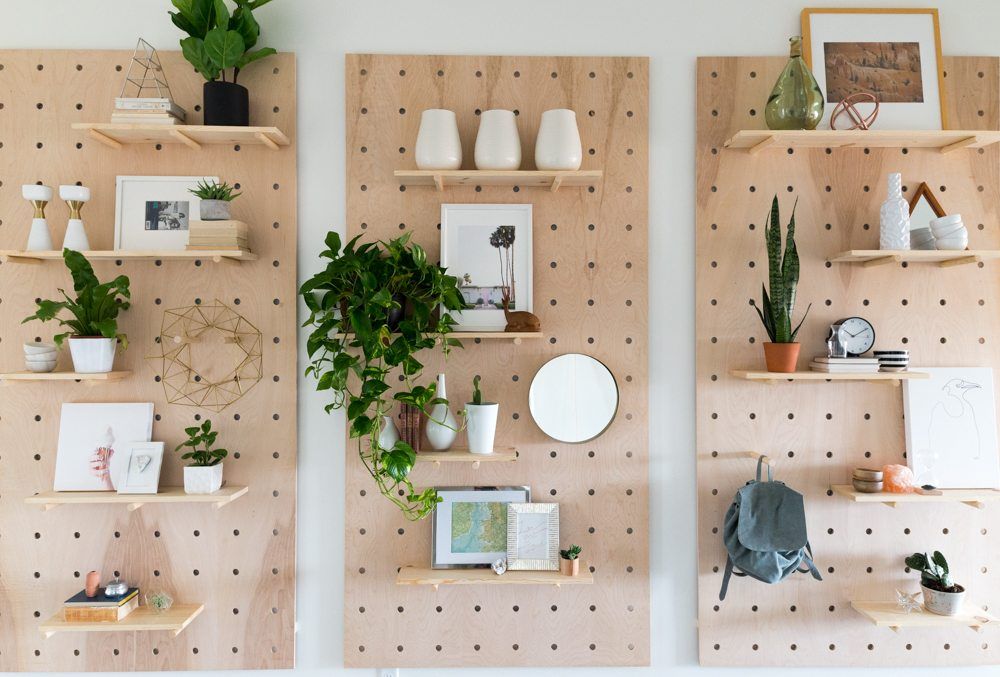
DIY projects offer a fantastic avenue for acquiring new skills, fostering creativity, and boosting personal growth. Whether you’re a seasoned crafter or a curious beginner, the world of DIY is brimming with opportunities to explore your potential and discover hidden talents.
Learning New Hobbies and Crafts
Learning a new craft can be an enriching and rewarding experience. It allows you to tap into your creativity, express yourself through tangible creations, and develop valuable skills.
- Woodworking: This classic craft involves working with wood to create furniture, decorative items, and functional objects. It requires patience, precision, and an understanding of wood properties. A basic woodworking project could be building a simple birdhouse or a wooden shelf.
- Sewing: Sewing is a versatile skill that allows you to create clothing, accessories, home decor, and more. It involves using a sewing machine or hand-stitching techniques to join fabric pieces. A beginner sewing project could be making a simple tote bag or a cushion cover.
- Knitting and Crocheting: These fiber crafts involve using needles and yarn to create knitted or crocheted fabrics. They can be used to make clothing, blankets, accessories, and decorative items. A beginner knitting project could be a simple scarf or a basic washcloth.
- Painting and Drawing: These visual arts allow you to express your creativity and develop your artistic skills. You can use various mediums, such as acrylics, watercolors, or charcoal, to create paintings, sketches, or illustrations. A beginner painting project could be a simple landscape or a still life.
- Jewelry Making: This craft involves creating jewelry using various materials, such as beads, wire, and metal. It allows you to express your personal style and create unique pieces. A beginner jewelry making project could be making a simple beaded necklace or a wire-wrapped bracelet.
Benefits of DIY Projects for Creativity and Problem-Solving
DIY projects provide a platform for nurturing creativity and enhancing problem-solving skills.
- Creative Thinking: DIY projects encourage you to think outside the box and come up with innovative solutions. You might need to adapt existing designs, improvise with materials, or find creative ways to overcome challenges.
- Problem-Solving: When tackling a DIY project, you’ll inevitably encounter obstacles. This is where your problem-solving skills come into play. You’ll need to analyze the issue, identify potential solutions, and implement them effectively.
- Experimentation: DIY projects provide a safe space for experimentation. You can try out different techniques, materials, and approaches without the pressure of perfection. This experimentation can lead to unexpected discoveries and creative breakthroughs.
Overcoming Challenges and Learning from Mistakes
Mistakes are an inevitable part of the DIY journey. However, they are also valuable learning opportunities.
- Embrace Mistakes: Instead of getting discouraged by mistakes, view them as chances to learn and grow. Analyze what went wrong and try to identify ways to avoid repeating the same error in the future.
- Seek Guidance: If you’re struggling with a particular aspect of a project, don’t hesitate to seek guidance from more experienced DIYers. Online tutorials, forums, and local workshops can provide valuable insights and support.
- Persistence: Sometimes, DIY projects can be challenging, but persistence is key. Don’t give up easily. Break down complex tasks into smaller, manageable steps, and celebrate your progress along the way.
DIY Project for a Sense of Accomplishment and Self-Reliance
A rewarding DIY project for beginners could be building a simple birdhouse. This project involves basic woodworking skills, but it can be completed with readily available materials and tools.
Building a birdhouse can be a fun and fulfilling project that teaches you essential woodworking techniques while providing a haven for birds in your garden.
- Materials: You’ll need a few basic materials, including wood boards, screws, nails, paint, and a drill. Choose wood that is weather-resistant and durable.
- Tools: You’ll need a saw, a drill, a screwdriver, a measuring tape, and sandpaper. If you don’t have these tools, you can often rent them from a hardware store.
- Instructions: You can find numerous free birdhouse plans online. Choose a plan that suits your skill level and desired size. Follow the instructions carefully, ensuring accurate measurements and proper assembly.
- Finishing Touches: Once the birdhouse is assembled, you can personalize it by painting it in bright colors or adding decorative elements. You can also install a perch or a feeder for added functionality.
Last Word
Embracing DIY projects is more than just a hobby; it’s a journey of discovery, creativity, and personal growth. By taking the time to learn, experiment, and create, you can transform your home, enhance your skills, and unlock a world of possibilities. So, gather your materials, unleash your imagination, and let the DIY adventure begin!

